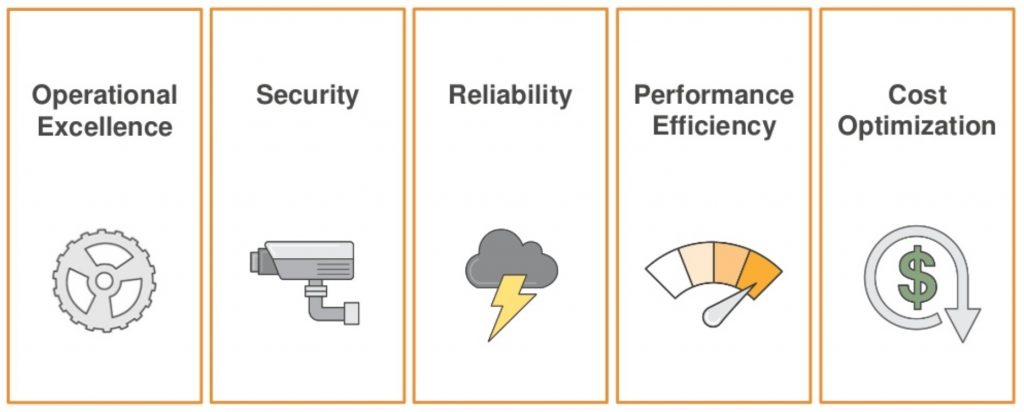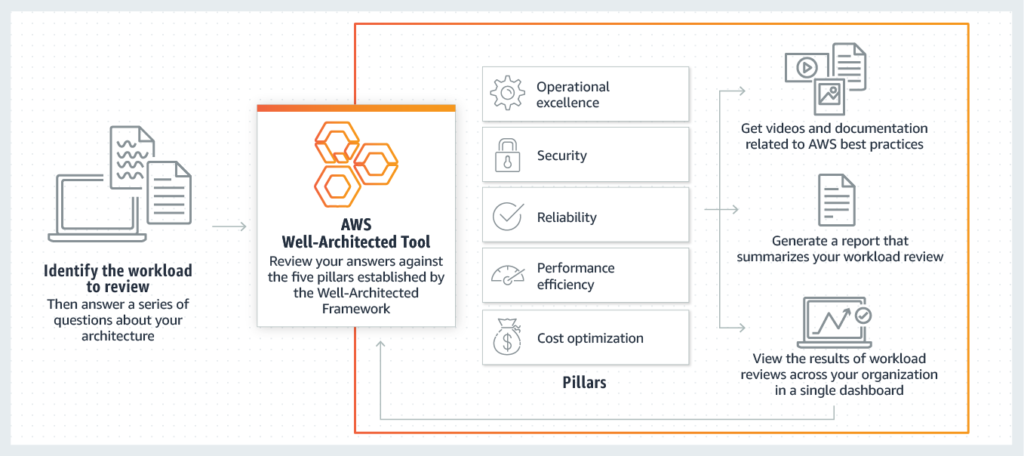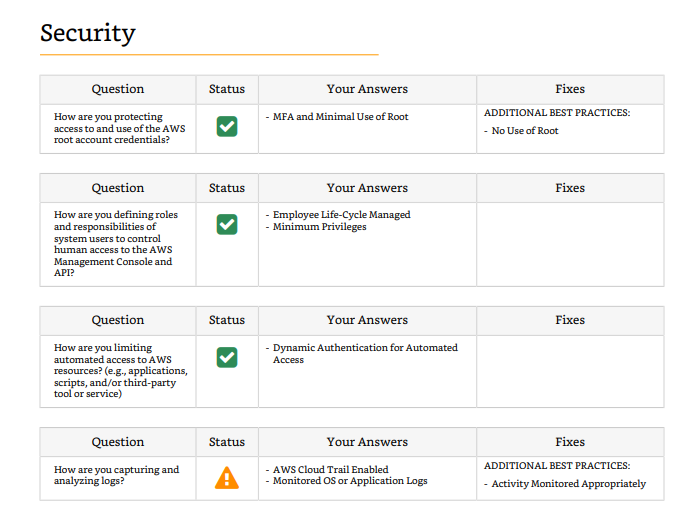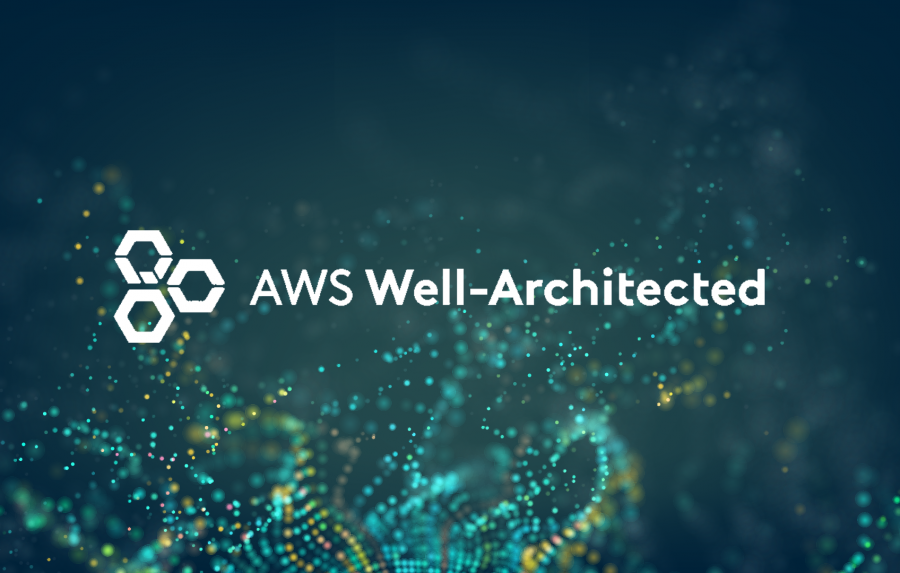By Jessica Cowle
Your AWS environment changes constantly. Engineers spin up and down new instances, change security groups, and experiment with new AWS services. So how do you make sure that your cloud doesn’t turn into the Wild West?
AWS recommends you conduct a Well-Architected Review every 12-18 months. The Well-Architected Review is a systematic approach to evaluating AWS architectures and can help you identify and fix potential issues with your environment. It’s based off the AWS Well-Architected Framework, which is a comprehensive set of AWS best practices (described over the course of several hundred pages of AWS whitepapers).
Don’t have time to dig through AWS whitepapers? Good news, we did. Below find out how to start a Well-Architected Review.
A Brief Overview of the Well-Architected Framework
AWS has divided the Well-Architected Framework into five distinct sections or Pillars. Each Pillar is designed to help you tackle a specific aspect of your environment.

Operational Excellence is the ability to run and monitor systems that deliver business value and continuously improve supporting processes and procedures. AWS outlines best practices in six design principles:
- Perform operations as code
- Annotated documentation
- Make frequent, small, reversible changes
- Refine operations procedures frequently
- Anticipate failure
- Learn from all operational failures
Security is having the ability to protect information, systems, and assets while delivering business value through risk assessments and mitigation strategies. When implementing security on your architecture, Amazon recommends six design principles:
- Implement a strong identity foundation
- Enable traceability
- Apply security at all layers
- Automate security best practices
- Protect data in transit and at rest
- Keep people away from data and prepare for security events
Reliability is making sure the system is capable of recovering from infrastructure or service disruptions, meeting demand for acquiring computing resources, and mitigating disruptions and network issues. To increase reliability, AWS recommends:
- Test recovery procedures
- Automatically recover from failure
- Scale horizontally to increase aggregate system availability
- Stop guessing capacity
- Manage change in automation
Performance efficiency is optimally using resources to meet requirements as demand changes and as technology evolves. In order to achieve performance efficiency, there are five principles of best practices:
- Democratize advanced technologies by pushing difficult technologies into the cloud vendor’s domain
- Go global in minutes
- Use serverless architectures to help you quickly deploy your system in multiple regions and remove the need to traditionally run and maintain servers
- Use the technology approach to create mechanical sympathy
Cost optimization is the ability to run systems to deliver business value at the lowest price point. To optimize for the lowest cost:
- Adopt a consumption model
- Measure overall efficiency by understanding the gains made from increasing output to reduce costs
- Stop spending money on data center operations
- Analyze and attribute expenditure
- Use managed services to reduce the ownership cost
In this video, our CTO Jason McKay talks about the Well-Architected Framework:
What’s the Process for Conducting a Well-Architected Review?

During the Well-Architected Review, a cloud expert will review your workload using the Well-Architected tool against the five pillars. Once the review is completed, your company will receive videos and documentation related to AWS best practices, a report summarizing your workload review, and a dashboard where you can view the results of workload reviews across the organization. You can then use the detailed findings to remediate issues and improve your infrastructure according to AWS best practices.
Why the Well-Architected Framework? Why not ISO or SOC or some other standard?
Unlike other well-established security standards, the Well-Architected Review tackles architectural best practices, cost efficiency, and other principles not traditionally evaluated in formal audits.
Logicworks recommends the Well-Architected Framework because it codifies and consolidates best practices across ITIL, Agile, and DevOps. It covers more than how to build a good AWS architecture. It shows you how you should also operate and maintain it.
How to Perform a Well-Architected Review Today
You can conduct a Well-Architected Review on your own with the Well-Architected Tool, or you can work with an approved Well-Architected partner, like Logicworks, to perform a custom evaluation. By engaging an approved partner, you can often receive funding from AWS to help offset the cost of a Well-Architected Review.

Sample from the Well-Architected Tool
Want a free demo of the Well-Architected Review? Learn more here.


No Comments